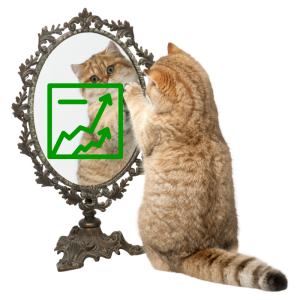 Active customers churn. And when they do we’re shocked and confused.
Active customers churn. And when they do we’re shocked and confused.
How can this happen? Your customer was very active, logging-in several times in the last month.
I think it’s fair to say that if Active customers churn, then “active” – as a customer “state” – clearly doesn’t equate to success.
So if it doesn’t mean your customer is successful, what exactly does “active” mean?
Let’s explore this a bit further…
The State of Your Customer is NEVER Binary
In my experience, “Active” is usually a vanity metric. We feel good when our users are “active.”
We can tout metrics like Daily or Monthly Active Users (DAU / MAU)… it’s fantastic, as long as “active” means something.
“Inactive” on the other hand is an opposite-of-vanity metric; we panic when they flip from active to inactive.
But neither of those “user states” – active or inactive – actually mean anything on their own, without additional context.
“Active” is a made-up “metric” that may or may not equate to the customer achieving success, realizing value, or doing anything that actually matters to them.
Quite often – at least in SaaS – “active” is unfortunately tied to in-app activity with one of the key inputs being “logins.”
Inactive is more telling, right? The user stops “using” and they stop getting value. Unless the email reports are all they need (are they interacting with those emails a lot but not logging in?), right? Or their seasonal downtime kicks in. Or they’re on vacation.
Or you’re defining “inactive” as not using certain features you WANT them to use (or they bought) but in fact, they’re achieving their Desired Outcome thank you very much.
Context is everything, which is why…
Logins Don’t Matter
While you generally need to sign-in to an app to get value, that action alone is probably not the thing that delivers value to your customer.
Simply being “active” in the product doesn’t mean you’re being “successful” either.
In fact, a lot of logins and random in-app activity could be a sign that your customer can’t figure out what to do… but they sure would like to.
It’s a signal that something’s amiss… but a lot of companies might wrongly classify that customer as “active” and therefore “onboard” and “successful.”
“Active” – logins, random in-app activity, etc. – without context could be that the user wants to do something but can’t figure it out, so “active” in that case is actually a churn threat. Crazy.
A Better Definition of “Active”
When it comes to “activity” in your app, you need to know what activity patterns equate to value delivered.
No, that doesn’t have to be realtime analysis of complex clickstreams across user cohorts… but it might mean that if their Desired Outcome with your CRM is more sales, that they’re adding leads, calling or emailing those leads, scoring those leads, killing some, closing others, and marking some as “won.”
In fact, just a subset of all of those – marking some leads as “won” – would be enough to know their activity is generating the desired results.
On the other hand, you could say that – since they’re NOT using the 42 other features that your product has – or that the pricing tier they signed-up at includes – that they’re inactive and are a churn threat. Even though they’re marking leads as “won.”
The Context of Desired Outcome
If you tag a customer as “active” or “inactive” simply by looking at usage activity WITHOUT the context of Desired Outcome, you will miss things, waste time and resources trying to “save” a customer that’s not a churn threat, ignore customers that are a threat, and otherwise inhibit your growth as a company.
But if you knew what they were trying to achieve, and knew that they were in fact achieving that or at least taking the actions necessary in your product to get them to that point (there is often a Success Gap between functional use of your product and their Desired Outcome), you would know that they are as “active” as necessary and are achieving success with your product.
If value is being delivered – if their Desired Outcome is being achieved – then Activity is where needs to be, at least at this point in the customer lifecycle.
Of course, you need to show them what their Desired Outcome should be, which would require activity and adoption to increase, which is why you need to develop a customer Nurture Program… but that’s a topic for a webinar I did recently with KISSmetrics.



